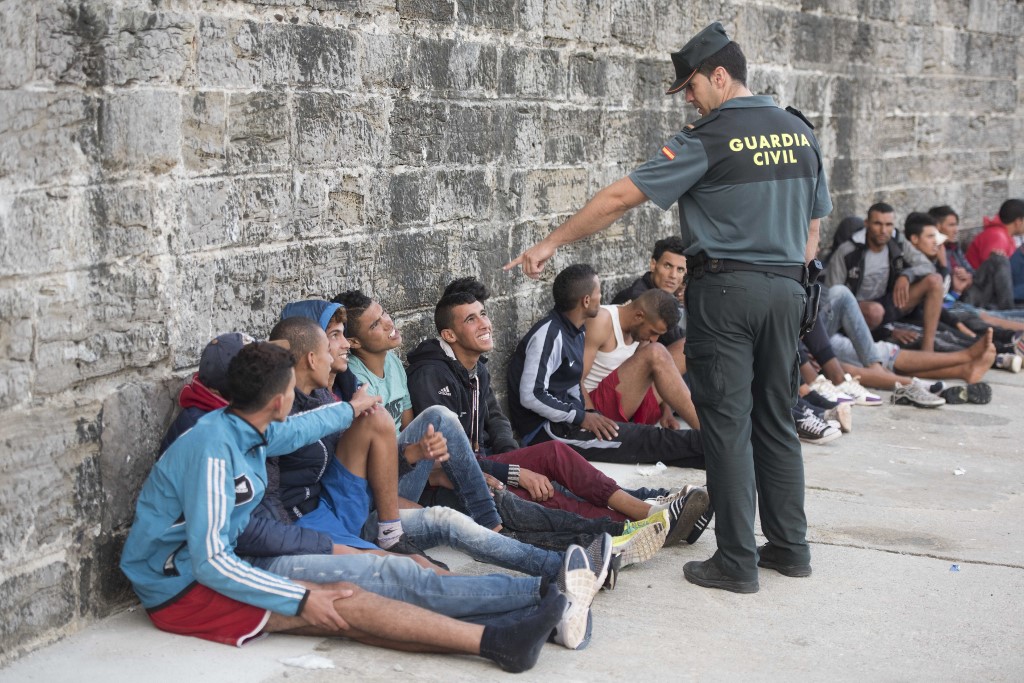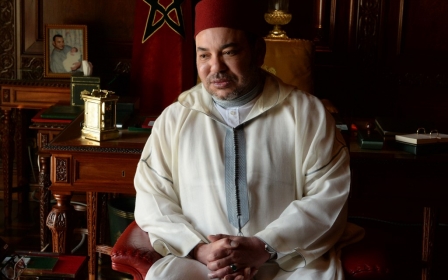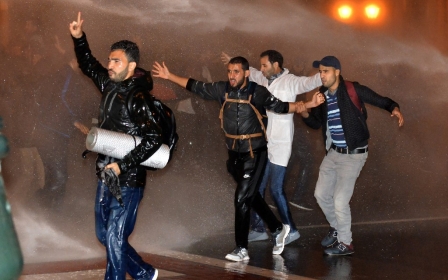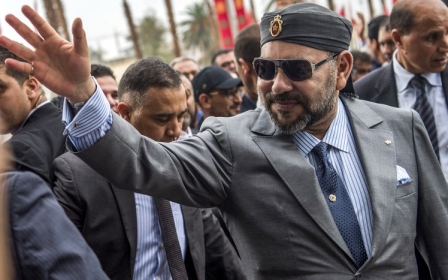While Moroccans flee poverty by sea, the king's luxury yacht says it all

Dozens of people converged in July aboard a new boat owned by King Mohammed VI - the Badis 1, anchored near the royal residence in M’diq.
The king had invited the elites of Casablanca and Rabat to come on board barefoot, so that their black heels would not tarnish the bridge, for the inauguration of the 70-metre yacht, among the largest in the world.
These distinguished guests had actually visited M’diq twice. The invitation was first issued for the previous day, but upon arrival, they were told - without explanation - that it had been delayed for 24 hours.
They returned the next day, dressed in their best attire. This time, the king was present to greet them, accompanied by three close friends: the Azaitar brothers, German boxers of Moroccan origin.
Stay informed with MEE's newsletters
Sign up to get the latest alerts, insights and analysis, starting with Turkey Unpacked
Luxury yachts
Mohammed VI already had a refurbished schooner, the 62-metre El Boughaz - but to celebrate 20 years as king, he rewarded himself with a larger and more modern ship. The Casablancan newspaper Tel Quel reported that the boat’s old owner, billionaire Bill Duker, had put it up for sale for 88 million euros. The purchase price, however, will remain a mystery, as the royal palace is not divulging this information.
While Mohammed VI was hosting his guests, his ex-wife, Lalla Salma, and their two children, crown prince Moulay Hassan and Lalla Khadija, were on holiday on a luxury yacht on the other side of the Mediterranean, on the Aegean Sea, according to reports in the Greek media.
If Moroccon authorities are attempting to contain Sub-Saharan migration towards Europe, they are not manifesting the same urgency in relation to their own citizens
Such manifestations of maritime indulgence coincide with the disclosure of figures, generally kept secret, on the increase in clandestine emigration from Morocco to Spain via sea.
In 2018, Moroccans accounted for just under 22 percent of more than 57,000 undocumented migrants arriving on Spanish shores. During the first half of 2019, while the total number of undocumented migrants fell, the proportion of Moroccans rose to nearly 30 percent. In May, they hit a record of 48 percent.
Such statistics do not appear on the Spanish interior ministry’s website, which maintains a policy of not exposing the number of arrivals by nationality, to avoid alienating local authorities in Rabat by highlighting the emigration epidemic. But Madrid does communicate this data to European agencies.
Migration phenomenon
These statistics take into account only part of Morocco’s migration phenomenon. When Sub-Saharan migrants set foot on Andalusian beaches, they seek to be caught by authorities, knowing they will be housed and fed for about two months and that their risk of being sent back are minimal.
The situation is entirely different in the case of Moroccans and Algerians, of whom respectively 36 percent and 32 percent of migrants intercepted by authorities were repatriated in 2018. As such, upon arrival, they try at all costs to avoid being ensnared by Spanish security forces.
In addition, there are also those who enter Spain legally, but opt to remain after their entry permit has expired and their savings have run out.
According to a report from the Spanish news agency EFE, about 17 percent of the 15,000 female seasonal workers employed as strawberry pickers in the region of Huelva did not return home - even though part of their salary would be withheld until departure.
Spain is the main port of entry for Moroccans into Europe, but it is by no means the only one. And it is hardly surprising that Moroccans are leaving the kingdom in larger numbers: a recent survey published by BBC Arabic found that 44 percent of Moroccans wished to emigrate - up 17 percent from three years ago - and the number rises to 70 percent among those under 30.
Around half of Moroccans said they wanted to see rapid political change in their country.
The next uprising?
If Moroccon authorities are attempting to contain Sub-Saharan migration towards Europe, they are not manifesting the same urgency in relation to their own citizens. Spanish data shows this, alongside the testimonies of some people of the Rif region, who often tell police how easy it is for them to leave by sea.
It seems likely that within the interior ministry in Rabat, the logic goes as follows: the fewer rebellious youth who stay in the Rif, the more likely that this volatile region will remain calm.
“Could Morocco see the next uprising, after Sudan and Algeria?” the BBC asked in light of its recent survey findings. This question is all the more relevant now, after the ostentatious display of maritime wealth at M’diq and on the Aegean Sea, while other Moroccans cross the sea on makeshift boats.
Hundreds of migrants, mainly Sub-Saharan Africans but also some Moroccans, have already drowned en route to Spain, according to European border agency sources.
While the Moroccan press does not ignore the royal family’s opulent lifestyle, it is cautious when discussing it, and equally avoids the issue of migration. Yet, social media teems with critiques of this royal excess, including comparisons between the price of the king’s boat and the state budget for education or healthcare.
The image of the royal family has suffered yet another blow, as it did with the king’s long stays abroad, or when he bought a million-dollar watch.
Are such grievances enough to lead Morocco down the path of Sudan and Algeria? This remains to be seen, but many Moroccans have been riveted by the events unfolding to the east.
The views expressed in this article belong to the author and do not necessarily reflect the editorial policy of Middle East Eye.
This article has been edited and condensed from the original version published in the MEE French edition.
Middle East Eye delivers independent and unrivalled coverage and analysis of the Middle East, North Africa and beyond. To learn more about republishing this content and the associated fees, please fill out this form. More about MEE can be found here.







